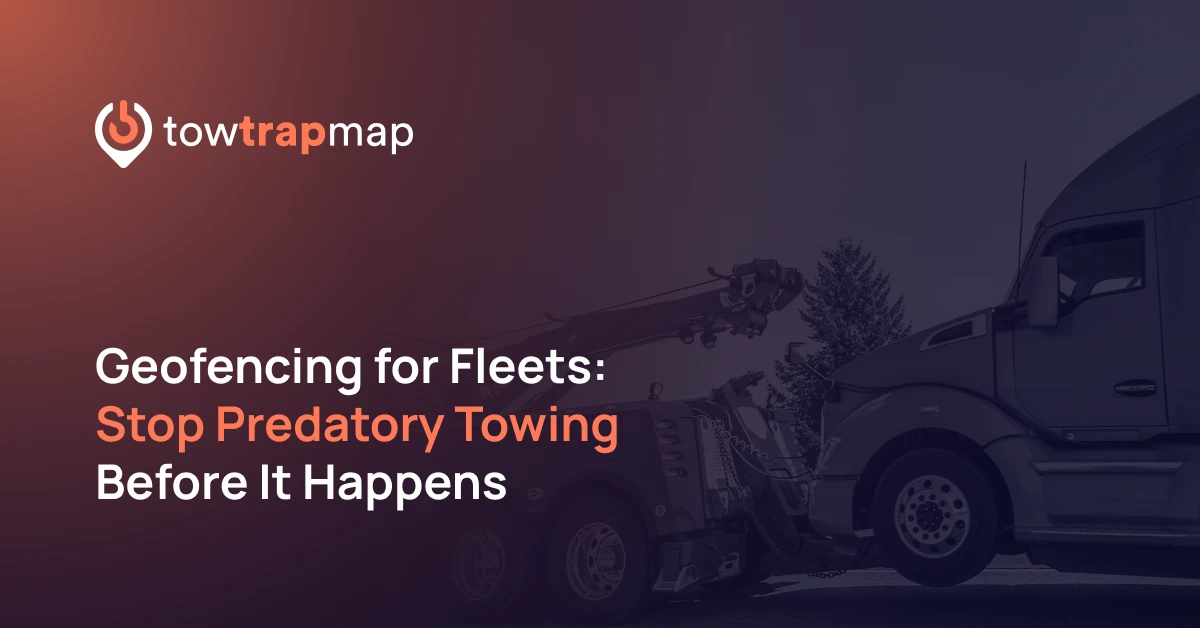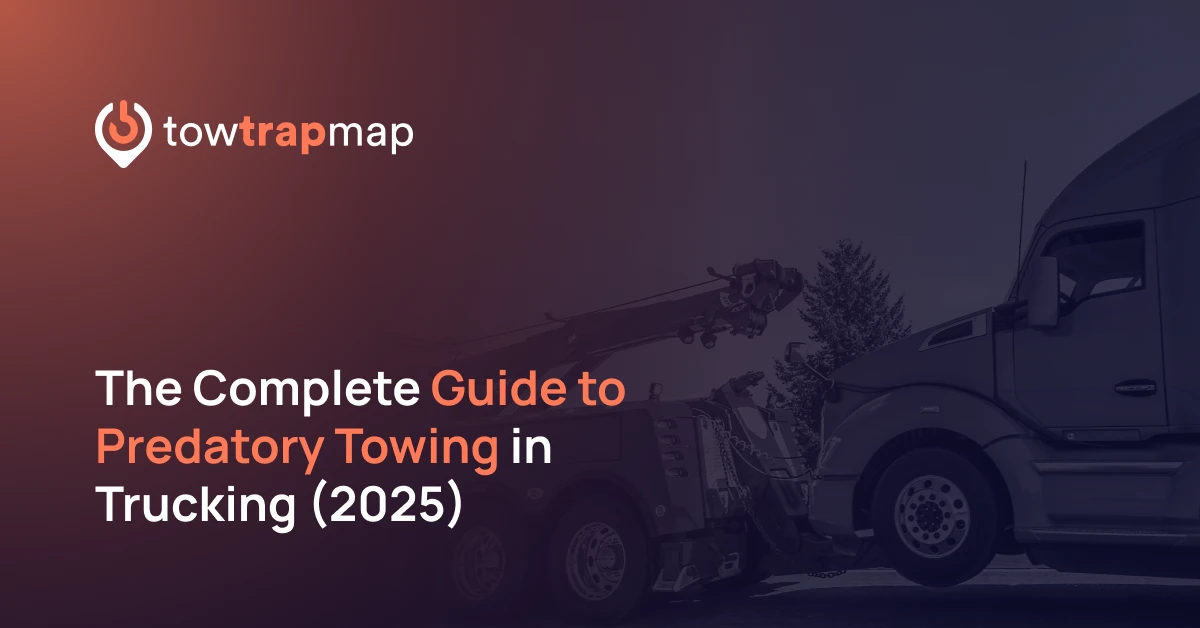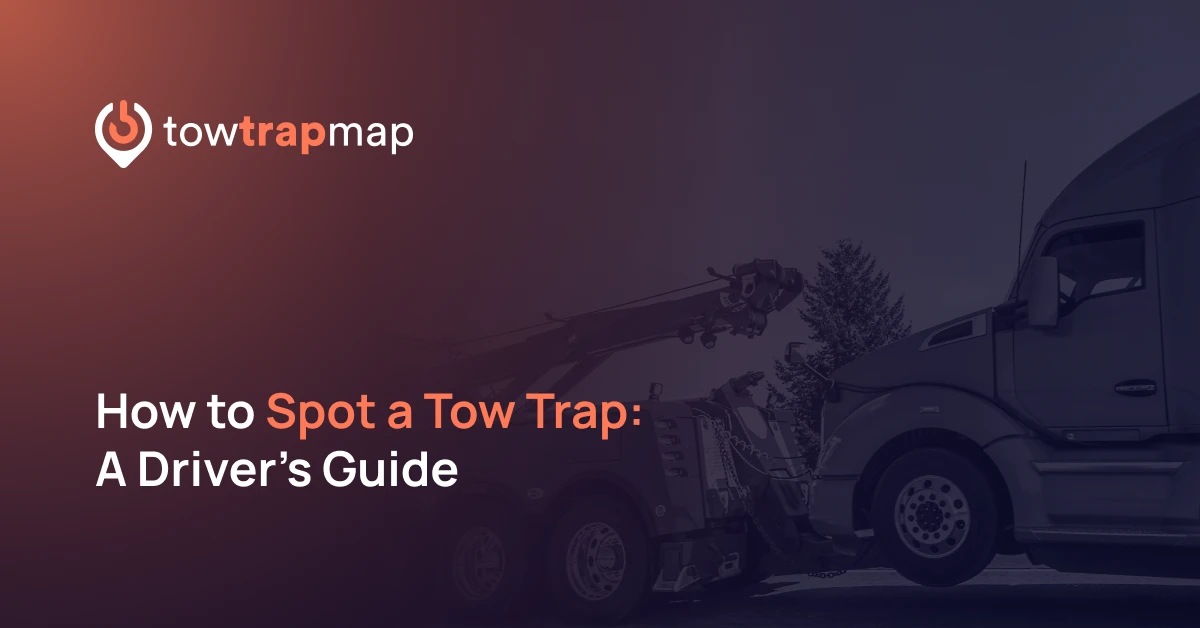Predatory towing is one of the most expensive and unpredictable risks in trucking. For fleets, a single unfair tow can erase thousands of dollars in operating margin. With geofencing for fleets, managers can take back control by using technology to spot high-risk zones before a driver ever parks. This approach doesn’t just reduce towing bills — it safeguards schedules, customers, and driver morale.
Why Fleets Can’t Ignore Predatory Towing
Most fleet managers already know that towing isn’t cheap, but predatory towing takes it to another level. A heavy-duty truck tow can quickly escalate into a $6,000–$9,000 bill once you add inflated hook-up charges, daily storage fees, and “administrative” costs. But the damage doesn’t stop at the invoice.
When a truck is taken off the road, loads are delayed, customers lose trust, and dispatchers are forced into crisis management mode. Drivers who feel trapped by unfair tows may also decide to leave the company, adding recruiting and training costs on top.
👉 See the full breakdown of predatory towing costs for fleets »
The bottom line: ignoring predatory towing isn’t an option. Fleets need proactive tools to keep drivers away from high-risk locations.
What Is Geofencing for Fleets?
Geofencing for fleets means creating digital boundaries around real-world places — usually shaped like circles or polygons on a map. When a truck enters or exits these zones, the telematics platform automatically triggers an alert.
This technology has long been used to improve routing, track asset use, or enforce customer-specific delivery zones. But now, fleets are realizing it can serve as a powerful defense against predatory towing.
For example, imagine a warehouse district where multiple drivers have reported being towed within minutes of parking. By setting up a geofence around that area, a fleet can immediately notify drivers to avoid the lot or limit their stop to essential activity only.
How Fleets Already Use Geofencing
Today’s telematics providers make geofencing straightforward:
Samsara allows dispatchers to create detailed polygon zones and send real-time in-cab warnings when drivers approach them.
Geotab provides zone entry/exit reports, helping managers analyze risky stops over time.
Motive lets fleets set up alerts at the lot level, ensuring trucks don’t remain in known predatory areas.
Each system has its strengths, but they all share a common limitation: fleets need accurate data to know where to draw those zones. That’s where TowTrapMap steps in.
Where TowTrapMap Fits In
The challenge with geofencing isn’t the technology — it’s knowing where to set the boundaries. TowTrapMap solves this by crowdsourcing reports directly from drivers and fleets.
Here’s the process: drivers or managers submit a report of a predatory tow or suspicious lot at towtrapmap.com/report. Each report is reviewed for accuracy, then added to the map as a pin. From there, our team draws a polygon geofence around the risky area.
Fleets can then export these zones as GeoJSON or CSV files, which plug directly into Samsara, Geotab, or Motive. The result is a living, constantly updated database of predatory towing hotspots, ready to integrate with the tools fleets already use.
👉 See how this connects to our Complete Guide to Predatory Towing in Trucking
Real-World Example
Consider a mid-sized fleet running routes through Chicago — one of the country’s worst tow trap hotspots. Within a single month, the fleet paid more than $15,000 in predatory towing fees. Each incident disrupted schedules, forced dispatchers to scramble, and frustrated drivers who felt unfairly targeted.
After integrating geofencing for fleets with TowTrapMap’s crowdsourced data, the same carrier began receiving early alerts when drivers approached those risky zones. Instead of paying another $6,000 bill, they rerouted trucks in real time and kept freight moving.
This is the real value of geofencing: it transforms scattered driver reports into an actionable shield against financial loss.
The Bottom Line
Geofencing for fleets is no longer just a convenience feature for routing and delivery — it’s becoming a critical safety net against predatory towing. By combining telematics platforms with TowTrapMap’s growing community data, fleets gain a constantly evolving defense system.
The key benefits include:
Real-time alerts to protect drivers before they enter tow traps.
Data enriched daily from community reports.
Seamless export into Samsara, Geotab, or Motive.
Fleets that adopt this approach can turn unpredictable losses into predictable prevention.
Call to Action
Predatory towing thrives when fleets are caught off guard. Geofencing flips the script, giving managers the ability to see risks before they strike.
👉 Report a Tow Trap Now — because every submission builds stronger protection for your fleet and the entire trucking community. 🚛



